We’ve all got one or two- those old backpacks collecting dust in the corner of our closets. They were our reliable partners on countless adventures, but now they seem to have lost their purpose. But what if their journeys aren’t quite over?
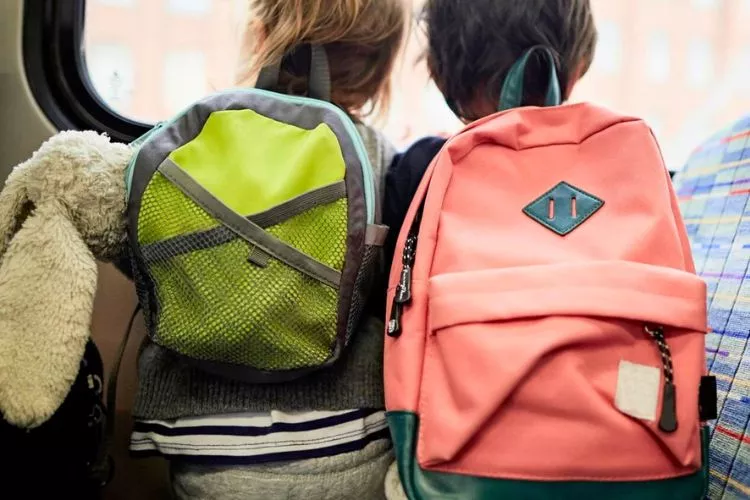
This article aims to inspire you with various practical and inventive ways to give your old backpacks a new lease on life.
By repurposing these faithful companions, we can reduce waste, save money, and put our creativity to good use. This is our small yet significant contribution to the pursuit of sustainability.
Quick Recommendations
What to do with old backpacks?
Now and then, we find ourselves with surplus bags that are no longer in use. If you have an old backpack lying around and you’re wondering what to do with it, this guide provides some inventive ways to give it a new lease of life.
Transforming Old Backpacks into Handy Tool Kits
One of the best ways to reinvent your old backpack is to convert it into a tool bag. Rather than splurging on a new tool kit, which can be expensive, why not use your old backpack to organize and house all your tools?
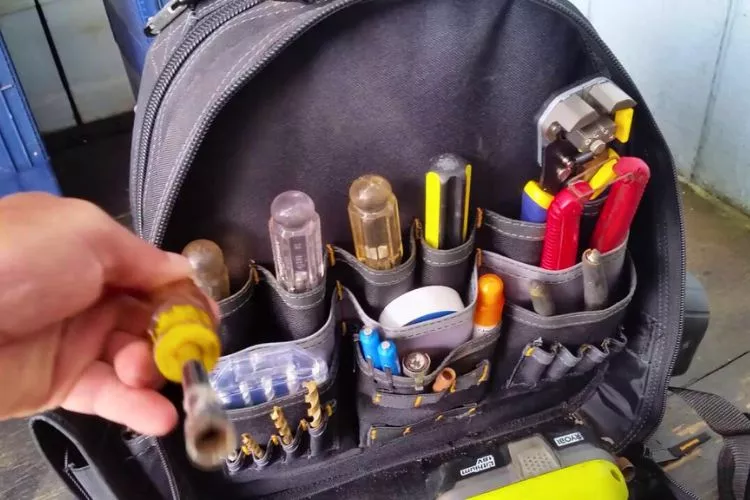
Here’s a step-by-step guide on how to go about it:
- Empty the bag: Make sure nothing left in the bag could damage your tools or vice versa.
- Clean the bag: Clean it well before putting your tools in. Remember, tools could be sharp and tear any fabric that’s not clean and strong.
- Sort your tools: Depending on your needs, you may want to categorize your tools before putting them into the backpack. For instance, you could divide them into classes such as cutting tools, measuring tools, fastening tools, and so on.
- Pack your tools: Assign different backpack pockets for various tool categories. Ensure the tools are secure and will not move around too much when carrying the bag.
Storing Unused Items in Your Old Backpack
Another great way to use your old backpack is to use it as storage for items you don’t use frequently.
Follow these steps:
- Identify what to store: Look around your house for items cluttering space or not having a designated storage location.
- Empty and clean the backpack: As with turning your backpack into a tool bag, you’ll want to start with a clean, empty bag. Shake out any dust and take a damp cloth to the interior if necessary.
- Organize your items: Sort them into categories, then place them into the backpack in a way that makes sense to you.
- Label if necessary: If you have more than one backpack for storage, it might be a good idea to label them so you can easily remember what’s inside each one.
Breaking Down Old Backpacks for Components
Your backpack’s life may be complete in its conventional form, but individual parts still possess value. By dismantling your old backpack, you can salvage useful bits and pieces for other projects.
Here’s how to strip your backpack for parts:
- Prepare Your Workspace: Lay out a large sheet of cloth somewhere spacious, like your garage or living room, to gather the parts without losing anything.
- Dismantle the Backpack: Carefully cut apart the seams using a seam ripper or scissors. Be cautious about preserving zippers, clips, buckles, straps, and fabric pieces, as these can be repurposed later.
- Sort the Parts: Divide your obtained parts into categories, like ‘zippers,’ ‘fabric,’ ‘straps,’ etc. This will help keep everything organized for future use.
- Store Safely: Keep these parts in a dry, clean place. A ziplock bag or a small container would be ideal for this.
Converting an Old Backpack into a Tablecloth Design
Who would’ve thought an old backpack could transform into an innovative tablecloth? Here’s a step-by-step guide to achieving that unconventional but stylish transformation:
- Ensure Your Backpack is Clean: Wash your old backpack thoroughly and let it air dry completely. This will remove any dirt or grime before you start your project.
- Determine the Size of Your Tablecloth: Measure the dimensions of your table to figure out how large the tablecloth needs to be. You’ll also want to account for some overhang on each side of the table.
- Disassemble the Backpack: Like the guide above, strip your backpack down to its fabric elements.
- Piece Together Your Tablecloth: Arrange the backpack fabric pieces to match the dimensions of your tablecloth. You might have to cut and rearrange the pieces to make them fit.
- Sew the Pieces Together: Stitch the pieces together using a sewing machine or needle and thread to form your tablecloth. This might require some basic sewing skills.
Donating Old Backpacks
There are many individuals and organizations out there who could genuinely benefit from a pre-loved backpack. Let’s go through the steps to effectively and responsibly donate your old backpacks:
- Cleaning the Backpack: Linking the backpack before donating it is crucial. Make sure you empty all pockets, shake out any debris, and give it a thorough wash.
- Quality Check: Inspect the backpack for any tears or broken zippers. If it’s in a condition that you wouldn’t use yourself, donating may not be suitable. Minor repairs might be necessary before you donate.
- Locate a Suitable Organization: Research and find an organization that accepts bag donations. Schools, homeless shelters, and refugee organizations are often in need.
- Organize for Drop-off/Shipping: Depending on your chosen organization, you may drop the backpack off in person or need to organize shipping. Ensure it’s packaged adequately and all required donation forms are filled.
Upcycling Your Backpack Into a Pet Carrier
One innovative way to give your old backpack a new purpose is by turning it into a pet carrier. It’s a great DIY project that isn’t as hard as it sounds. Let’s go through the process step by step:

- Choose the Right Backpack: Make sure your backpack is sturdy and large enough to comfortably accommodate your pet.
- Clean and Inspect the Backpack: Just like when donating, you should start by cleaning the backpack and checking it for any damage.
- Create an Opening: Depending on the size of your pet, draw a circle or an oval on the upper half of the backpack and cut along the marked lines to create an opening.
- Secure Edges and Add Mesh: Apply binding around the cut edges to prevent fraying. Then, sew or glue a metal or plastic mesh over the opening. This will provide ventilation and a window for your pet.
- Add Cushioning: Place a soft, cozy fabric at the bottom of the backpack to comfort your pet during travel.
- Ensure Safety: Make sure there are no loose parts inside the backpack, and also check the closures and straps for strength.
DIY Ideas for Old Backpacks
Here are several examples of how you can get creative with your pre-loved backpacks:
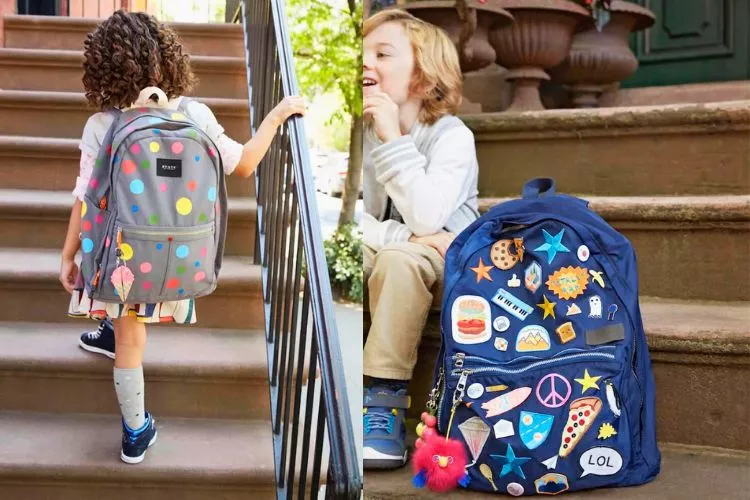
Turn It into a Stylish Tote Bag
Convert your backpack into a unique tote bag by following these steps:
- Remove the shoulder straps and any other unnecessary attachments.
- Sew the top edges to add a binding or a strip of fabric to ensure a clean finish.
- Attach two handles – you can use straps from the backpack or sew on fabric handles.
Create a Gardening Tool Bag
An old backpack can make a perfect tool carrier for gardening by doing the following:
- Assign separate compartments for different gardening tools.
- Add padding or lining to protect the tools and your backpack.
- If needed, add external pockets or loops for additional storage.
Make a Wall Organizer
For a fun and functional home decor project, transform your backpack into a wall organizer by following these instructions:
- Strip down the backpack to its fabric pieces.
- Arrange and sew the pieces onto a large canvas or fabric backing.
- Incorporate pockets and pouches creatively for the organization.
- Attach the organizer to a decorative rod and hang it on your wall.
Repairing Your Old Backpack
Breathing new life into a worn-out backpack can be done by repairing its damages. Let’s go through the steps necessary to fix common issues:

Patching Holes and Tears
- Clean the area: Ensure the backpack is clean and dry before beginning.
- Select the patch material: Choose a fabric similar to your backpack – sturdy and flexible.
- Cut the patch: Cut a piece of fabric slightly larger than the damaged area.
- Attach the patch: Use fabric glue or sew the patch over the damaged area, ensuring the edges are neatly bound.
Fixing Broken Zippers
- Examine the issue: Check if the zipper is misaligned, stuck, or missing teeth.
- Replace the zipper slider: If the slider is damaged, replace it with one that matches your backpack’s zipper size.
- Lubricate the zipper: Apply wax or soap to lubricate the teeth and make the zipper glide smoothly.
- Replace the entire zipper: If the zipper is irreparable, carefully remove the existing zipper and sew in a new one.
Replacing Straps and Buckles
- Remove the damaged strap/buckle: Cut the thread holding the damaged strap or buckle in place, being careful not to damage the backpack fabric.
- Select a replacement: Choose a new strap or buckle that matches the specifications of the original.
- Attach the new strap/buckle: Sew the new strap or buckle onto the backpack securely and neatly.
How Are Backpacks Recycled?
From worn-out zippers to frayed fabric, that once-reliable backpack may no longer serve its purpose. But instead of tossing it in the trash, consider recycling it. Recycling backpacks is an important step towards environmental sustainability. In this guide, we’ll take you through how backpacks are recycled.
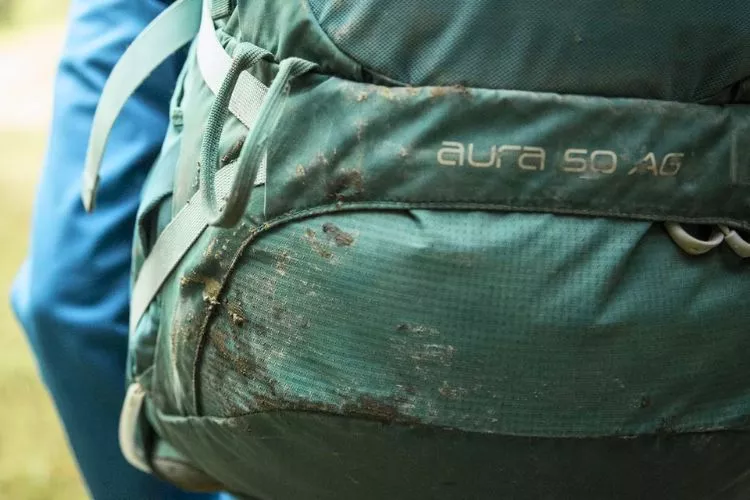
Preparing the Backpack for Recycling
The journey of a backpack toward a new life begins with preparation. Here are the initial steps to get your backpack ready for recycling:
- Empty Your Backpack: Ensure all pockets, zippers, and compartments of materials or personal items are empty.
- Clean the Backpack: Sanitize and clean the backpack per the manufacturer’s instructions. Most backpacks can be washed in a washing machine, but always check the care label first.
- Inspect the Backpack: Look for parts that can be separated, like zippers, plastic buckles, and metal frames. Separate these parts as much as possible, as they will be recycled differently.
The Recycling Process
Once your backpack is ready, it follows the following steps in the recycling process:

Collection and Transportation
Recycling centers, charity organizations, or specialized programs are common collection points for used backpacks. Once collected, the backpacks are transported to a recycling facility to undergo further steps.
Sorting and Separation
At the recycling facility, the backpacks are sorted based on their constituent materials. These can include various types of fabrics, metals, and plastics. Each material type needs a specific recycling process.
Processing
The sorted materials are then processed separately:
- Fabric: Natural fabrics like cotton or hemp can be resized into smaller fibers and cleaned, carded, spun, and woven into new fabric. Synthetic fabrics like polyester can be shredded, melted, and re-extruded into new fibers.
- Metal: Metal parts like zippers and frames are melted down and reused to create new products.
- Plastics: Plastic parts like buckles are shredded, cleaned, melted, and remolded into new plastic products.
Reuse or Repurpose
The new materials derived from your old backpack can then be used to manufacture new products, depending on the quality of the material. These can range from new backpacks and clothing to insulation materials, carpeting, or outdoor furniture.
Recycling helps to reduce the demand for raw materials, decreases pollution, and saves energy. So the next time you consider throwing away an old backpack, remember this guide and opt for the more sustainable choice – recycling!
Can You Donate Old Backpacks?
Donating old backpacks is not just possible; it’s a great way to contribute to society meaningfully. You can give them a second life in the hands of someone who truly needs them. Here’s how to go about it:
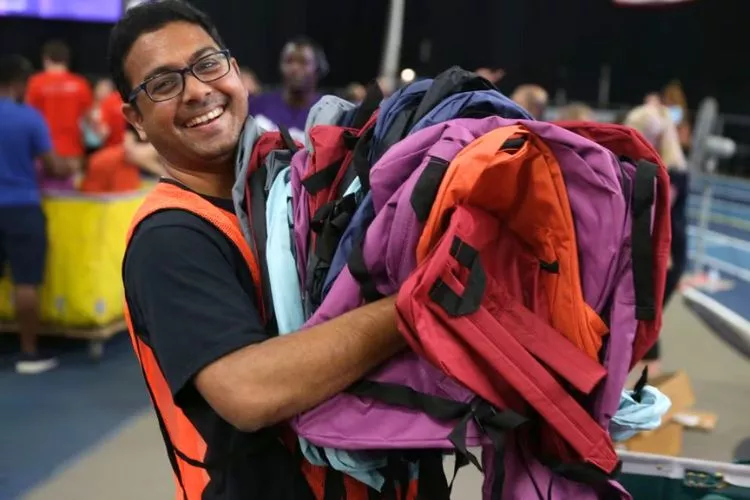
- Clean Your Backpack: First, make sure the backpack is clean. Empty all pockets and compartments, shake out any loose crumbs or dirt and wash the backpack according to the manufacturer’s instructions.
- Inspect the Condition: Evaluate the overall condition of the backpack. Check for any tears, broken zippers, or missing straps. If you find any damages affecting functionality, consider repairing them before donating.
- Choose the Right Place: Look for charities, non-profit organizations, schools, or shelters that accept backpack donations. Some organizations (e.g., Backpack Project, Backpacks For Kids) focus on collecting and redistributing backpacks.
- Donation: Depending on the organization, you may need to drop off the backpack in person or ship it to a specific address. Ensure the backpack is packaged properly and all required donation details and forms are appropriately filled.
How Do You Make an Old Backpack Look New?
Renewing the look of your old backpack is not just appealing visually, but it also helps extend its usability and keeps it out of landfills. The following guide will transform your old backpack into a seemingly new one.

Cleaning the Backpack
A thorough cleaning is the first step before any necessary repairs or improvements, as it can automatically make the backpack look fresher.
- Empty the backpack: Ensure all pockets, zippers, and compartments are clear of belongings and debris.
- Follow manufacturer’s guidelines: Check the care label for the manufacturer’s recommendations on cleaning the backpack.
- Washing: Generally, most backpacks can be machine-washed. Place the backpack inside a laundry bag or pillowcase, and use a gentle cycle with mild detergent and cold water. Air dry completely before proceeding to the next steps.
Repairing Damages
Once the backpack is completely dry, address any damages to prevent further deterioration.
- Fix holes or tears: Sew up any small holes or tears. Use a fabric patch and glue, or neatly stitch it over the damaged area if needed.
- Repair broken zippers: If the zipper slider is damaged, replace it with one of a matching size. Lubricate the zipper teeth with wax or soap to ensure smooth operation. For irreparable zippers, remove the existing zipper and sew in a new one.
- Replace straps and buckles: Remove damaged straps or buckles carefully, ensuring not to damage the backpack fabric. Acquire replacements that match the specifications of the original ones and sew them onto the backpack securely.
Restoring Fabrics & Colors
Reviving the fabric can give your backpack a refreshed appearance.
- Brightening colors: Try using a laundry booster like oxygen bleach or color-safe bleach to enhance the colors of your backpack during the washing process.
- Fabric spray paint: For color restoration or a new hue, use fabric spray paint specifically designed for fabric materials. Follow the instructions on the product for the best application and results.
Adding Personal Touches
Customize your backpack with personal touches to make it feel new and unique.

- Embroidery or patches: Add your initials, fun quotes, or quirky designs with embroidery or by attaching patches.
- Accessorize: Customize your backpack by adding zipper pullers, keychains, or decorative items that showcase your personality.
Protection & Maintenance
Now that your backpack looks fresh keep it that way by following these tips:
- Protection: Consider using a fabric protector spray to help shield against water, dirt, and stains.
- Regular cleaning: Clean and inspect your backpack regularly to address any minor issues before they become major problems.
- Storage: Store the backpack in a dry, clean, and well-ventilated space when not in use.
Frequently Asked Questions (FAQs)
What recycled materials are used in backpacks?
Answer: Many eco-conscious companies now manufacture backpacks using recycled materials. Commonly used materials include recycled polyester, nylon, and canvas, derived from post-consumer waste such as plastic bottles or expired parachute material. Metal parts like zippers or buckles can also be sourced from recycled metals.
What were old backpacks made of?
Answer: Traditional backpacks were typically made of natural materials, including cotton, leather, or canvas. Over time, synthetic materials like nylon and polyester became popular due to their durability, lightness, and water resistance. These materials are still commonly used today.
Are plastic backpacks recyclable?
Answer: Yes, plastic backpacks can be recyclable, provided the type of plastic used is itself recyclable. However, separating components such as zippers or fabric linings is important before recycling. Verify with local recycling facilities to confirm if they accept plastic backpacks.
Where to recycle old backpacks?
Answer: Old backpacks can be recycled at recycling centers, charity shops, or through specific collection programs. Some outdoor gear companies also have take-back programs for their products. Online platforms like TerraCycle offer specific recycling solutions for backpacks as well.
Conclusion:
In conclusion, old backpacks can find new purposes through recycling, donation, or repurposing. By opting for such sustainable choices, we reduce waste, pollution, and demand for new resources. Proactively maintaining and caring for your backpack ensures a longer lifespan, while donating usable backpacks positively impacts someone in need. Adopting environmentally friendly practices and encouraging others to do the same is vital. Be thoughtful, creative, and eco-conscious when deciding what to do with your old backpack.





